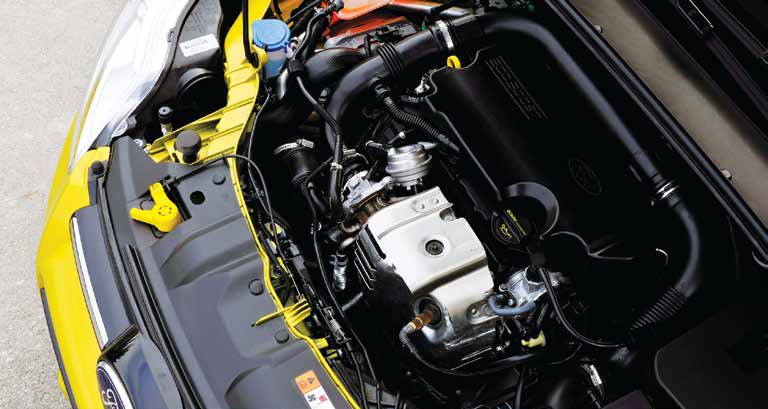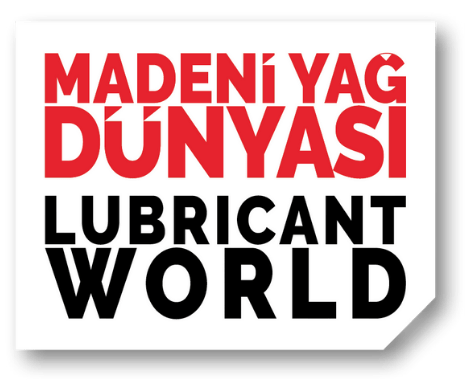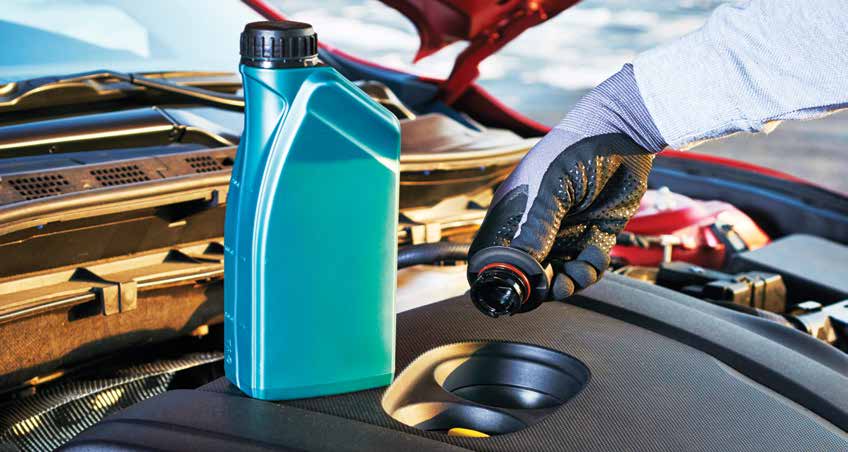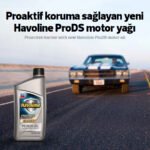Fuel economy improvement and CO2 emissions reduction are undoubtedly the main drivers of technology change in our industry. As governments around the world introduce and tighten CO2 emissions legislation, vehicle manufacturers, oilcompanies and additive suppliers must collaborate on the development of innovative and cost efficient ways to improve vehicle fuel economy. Here, Infineum explores how lubricants are evolving across different markets to ensure they contribute towards these requirements and deliver sufficient hardware protection.
Passenger car
In the passenger car market, increasingly stringent emissions regulations are having an impact on hardware developments. The emerging smaller, more complex systems present a challenging environment for the engine oil. Lubricants must keep engines cleaner for longer, sustain thermal stability while preventing oil degradation, protect both the engine and technologies and, at the same time, contribute to fuel economy performance while protecting the engine from wear.
The drive to improve fuel economy means we can expect smaller, turbocharged, gasoline direct injected engines to be deployed more widely in all the key markets of the world in the coming years. The latest generation of these engines will be designed for increased power density – making them increasingly susceptible to low speed pre-ignition (LSPI). When LSPI does occur it can result in damaged pistons, broken piston rings and bent connecting rods.
OEMs can introduce engineering solutions. At Infineum, we are conducting research into the influence of lubricants and fuels on the occurrence of LSPI. In addition, we have has been looking for ways to help eliminate, or at least control, these unpredictable and highly undesirable events.
In North America, test development continues to be the major challenge for the new ILSAC GF-6 specification and industry stakeholders have acknowledged that the first allowable use date is unlikely to occur before 4Q 2018. This is a significant concern for some OEMs who want touse technology meeting the ILSAC GF-6 specifications for their 2019 model year engines. Differences between laboratories is a key issue for many of the tests. The Sequence IIIH, has made some good progress, but others have lagged behind.
The Sequence IIIH is critical since it can also be adopted to replace the Sequence IIIF/G to allow current and older API C and S specifications to be maintained.
The new Sequence VIE test is also key to replace the Sequence VID, but engine age may severely limit the number of candidate tests and this is concerning for both cost and test life. It appears the Sequence VGA will be put in placeversus the new Sequence VH. The Sequence IVB has been optimized operationally and should complete its precision matrix by the end of July. Reconciliation of the remaining activities with the timeline will begin in industry to minimize the delay without compromising product delivery.

Heavy-duty diesel
In the heavy-duty diesel market, North America and Europe are experiencing a period of growth. Reducing fuel consumption, protecting engine and systems and improving biofuel compatibility are some of the key issues affecting heavy-duty diesel lubricant formulations. In addition, end users are looking for extended drain intervals to reduce costs and maximize vehicle up time. This makes it more important to use high quality base stocks and additives. To meet these requirements, OEMs have introduced new hardware and begun to look at lower viscosity lubricants. This means monogrades have almost completely disappeared from most of the market. API CK-4 and FA-4 oils are now available on the market and as OEMs continue to share their oil recommendationsfor 2017 model year engines, many are primarily
recommending CK-4 oils. As a result, the fastest growing product is expected to be SAE 10W-30 API CK-4, which provides improved fuel economy over SAE 15W-40, while being recommended for both new and old engines.
Small engines
The motorcycle market is picking up as global sales continue to grow, albeit modestly. However, developing motorcycle lubricants is a complex business. Formulations
must not only meet the needs of OEMs, who are looking for dedicated lubricants to protect the engine, clutch and gears, but also the regional needs of end users.
As passenger car oils tend to lower viscosities to deliverfuel economy benefits, their use in motorcycles is increasingly inappropriate. This trend means OEMs are looking for specifically tailored lubricants that deliver excellent hardware protection in this high temperature, high rpm environment. At the same time, end users are demanding, among other things, better clutch feel, lower oil consumption and longer engine life.
One key topic is the introduction of the revised JASO T 903 standard for four-stroke motorcycles, which was released last year. Infineum regards gear pitting as an important performance parameter. The development of a well-defined gear pitting test will enable clear differentiation between a properly formulated motorcycle oil designedto protect the gears, clutch and engine, and a passenger car motor oil designed only to protect the engine. When a test is included, there may no longer be a need for the current phosphorus requirement of between 800 ppm and 1,200 ppm. But, until then, the current limits will continue to serve the interim needs of the industry.
In our view, as fuel economy becomes more of an interest to motorcycle OEMs, the inclusion of a gear pitting test that is relevant to the wear conditions experienced in a motorcycle is increasingly important. Currently most motorcycle oils are SAE 10W-40 but we are already seeing a growing interest in lower viscosity grades. This trend makes wear control even more of a challenge and the gear pitting test is needed to ensure adequate hardware protection is delivered by these low viscosity oils.
Leisure marine
In the leisure marine market, although there has been a continued recovery in recent years, sales of pre‐owned boats exceed those of new models. With the steady transition of the global powerboat engine population to 4-stroke engines, which now compete head-to-head with the 2-stroke engines that once defined the market, the number of NMMA certified FC-W® marine oils has increased as oil marketers recognize the opportunity for growth.
Most marketers expect the demand for 4T marine engine oils to be lower than the 2T market of the past, by nature of less oil consumption. However, the 4T oil market could be further constrained by owners who choose to use passenger car motor oils in their powerboat engines, without understanding the advantages marine oils provide. Marine engine parts are subjected to much more stress than in a passenger car and require more viscous oils. In our view, more education is needed to explain the benefits of marine oils to powerboat owners in order to help them select NMMA FC-W® certified oil which will provide the extra level of performance and protection their engine needs. This education, coupled with lube marketers increasing the availability of FC-W® oils at big box and auto part stores, could help the 4T marine oil market to reach its full potential
Gas engines
Large stationary reciprocating engines are increasingly being used to generate electricity. As gas engine customers look to maximize their return on investment the demand for engines with greater specific power outputs is increasing. This desire for improved efficiency, combined with the need to reduce emissions, has spurred gas engine manufacturers to introduce a number of design changes to modern gas engines. The latest high efficiency engines generally have tighter tolerances and reduced clearances for engine components, higher compression ratios, increased turbocharger pressures and improved combustion and valve timing.
However, despite these more challenging conditions, the latest gas engines demand more protection from less lubricant. Not only is exceptional hardware protection over longer oil drain intervals required, but this also must be achieved with reduced oil consumption, which means that since there will be less top-up with fresh lubricant, the oil needs to work harder for longer.
These demands spark questions around the ability of current additive technologies to provide the same level of engine protection that is achieved in today’s hardware over the expected oil drain duration. This uncertainty may result in shorter oil drain intervals. This is a very undesirable outcome for end users who are looking to improve the return on their investment by maximizing uptime, maximizing generating efficiency and reducing running costs. To keep these latest engines reliably in service for
longer, the formulation of the lubricant additive system needs to be enhanced so that it provides better protection in the increasingly challenging environment. Higher qualitylubricants can help to maximize the performance of modern gas engines and allow them to be operated at higher temperatures and pressures for longer periods, without increasing the risk of engine damage. Next generation gas engine oils contain a complex mixture of chemicals that must be carefully balanced toprotect the engine over the required drain interval. To support the additive package, the choice of base oil is also crucial.

Transmissions
In the growing global automatic transmissions market, the biggest driver for hardware design change is the need to improve fuel economy to meet tightening mandated targets and consumer demands. The once popular three to five speeds are in decline and in the near future, eight,nine and ten speeds are expected to account for the largest market share.
For OEMs the transmission system is a key target to improve the efficiency of their vehicles. In conventional stepped automatics we have seen the trend for light weighting and an increase in the number of gear steps. Growth is also expected in continuously variable transmissions (CVT) and dual clutch transmissions (DCT). So far, the uptake of these different transmission types has varied from region to region. Among other factors, their popularity is typically a reflection of the driving preferences in each region. CVTs will continue to be popular in Japan and Korea, and we expect to see strong growth in China and in North America, where technical advancements enable their use in larger vehicles. As new CVT designs come onto the drawing board, with unique lubrication requirements, the transmission fluid has become an integral part of the design. In our view, advances in CVT hardware technology provide fertile ground to develop ultra-advanced fluids. This means formulation expertise will be increasingly important.




